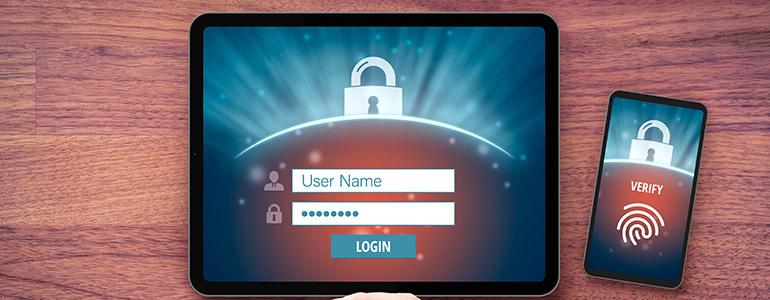Email remains a primary communication channel for most businesses, making it a prime target for cyber threats. Implementing strong email security solutions is not just about blocking spam—it’s about safeguarding sensitive information, protecting against phishing attacks, and ensuring your company’s data is safe. A secure email gateway serves as a first line of defence, filtering out malicious emails and detecting potential business email compromise attempts before they reach your inbox. Advanced tools, like those leveraging machine learning, continuously adapt to evolving email threats, providing a shield against unknown and sophisticated attacks.
At Labyrinth Technology, we provide comprehensive email security solutions designed to protect your business from phishing emails, advanced malware, and other email-based attacks. With the rise of sophisticated email threats, including account takeover attacks and malicious URLs, it’s crucial to have robust email security in place.


Business email compromise can have devastating consequences, leading to financial loss and data breaches. As cyber criminals become more innovative, relying on basic security isn’t enough. You need robust threat protection that tackles not just spam filtering but also more targeted threats like impersonation attacks and malicious attachments.
Advanced email security platforms incorporate phishing detection and email encryption to prevent data breaches and protect sensitive communications. Phishing attempts are becoming increasingly deceptive, with some attackers exploiting social engineering tactics. By incorporating email authentication and URL filtering, businesses can prevent email fraud and block potentially dangerous links embedded in emails.
Phishing attacks are on the rise, with increasingly sophisticated tactics aimed at tricking employees into revealing sensitive information. Our security awareness training goes hand-in-hand with our email security tools, educating your staff to spot social engineering attacks and phishing emails. We help you develop a culture of vigilance, reducing the human risk factor. Our email security solution identifies and blocks malicious content, ensuring that your employees are not exposed to email threats.
Email is one of the most common routes used by cyber attackers for malicious activity. Implementing proper email security controls is fundamental for all organisations regardless of what data is processed.
Labyrinth have been contracted to manage the response to a number of cyber security incidents, most of which were the result of inadequately protected email systems. These incidents were all for small businesses and resulted in financial losses of up to tens of thousands of pounds each.
94% of malware comes through email, but this is not the only threat to consider. Through Phishing and Business Email Compromises (BEC) cyber attackers gain access to email accounts to leak confidential data and send fraudulent communications (such as requests for invoice payment) for financial gain.
Let’s dive into the various email security solutions that can safeguard your company’s communications and protect sensitive data. Often, it’s not just about one tool, but a smart combination that gives you the best defence against cyber threats. This multi-layered approach can significantly reduce the risk of falling victim to phishing attacks, data breaches, and other malicious activities, making your business communications far more secure.
Multifactor authentication is where users are required to enter their password and a second form of authentication (usually a temporary code sent to an app on their mobile phone) any time they set up a new device or sign in to a web portal. Multifactor authentication is available as standard at no extra cost on virtually every cloud business system today including Microsoft 365 so there really is no excuse for implementing it.
With multifactor authentication, a user’s email account cannot be breached with the password alone which means it is virtually unbreachable. It is one of the most effective controls that can be implemented.
Email security software solutions like Microsoft Defender, Symantec, Vade or Mimecast are essential to providing protection against:
Some malicious emails will inevitably slip through the net, so it is important that users know how to spot them. In particular, finance teams should have clear processes in place for validating invoices received via email.
Labyrinth provide end user training material to all of our managed support clients. We also partner with uSecure to deliver a low cost user security awareness platform, featuring training videos, simulated phishing attacks and more.
Any devices used to sync emails should be encrypted and password protected. For mobile devices, this can be enforced using Mobile Device Management (MDM) tools such as the built-in version provided with most Microsoft 365 licenses.
Mobile Device Management tools can also be used to remotely wipe devices if they are lost or stolen and usually do not infringe on user privacy.
Windows and Mac devices can be encrypted using the built-in Bitlocker and FileVault tools.
Individual high-risk emails can be encrypted if required using add-ons and third–party tools.
Protecting your business from sophisticated email threats requires a robust email security solution. At Labyrinth Technology, we provide comprehensive email security solutions designed to safeguard your organisation against a variety of email-based attacks. Whether it’s blocking phishing emails, detecting compromised accounts, or stopping advanced malware, our services offer unmatched threat protection. Using secure email gateways and machine learning technology, we ensure that your business communications remain safe, even when facing the most advanced email threats.
With a focus on data loss prevention, our solutions not only protect against external threats but also monitor internal email communications for any suspicious activity. We specialise in seamless integration with both cloud-based email platforms like Google Workspace and traditional on-premises setups. From email encryption to email archiving, our email security platform has all the key features to maintain your business’s continuity and reputation.
Get in touch today and let’s discuss how we can keep your sensitive information protected, so you can focus on what truly matters—growing your business.
Through our managed security service plans we will look after the core elements of your cyber security systems and help fulfil the role of CISO (Chief Information Security Officer), giving you peace of mind that your data and systems are protected. Many of our managed security services are also bundled into our core Managed IT Support plans. We will recommend a plan that best fits your needs and budget, so whether you have 5 or 100+ employees we can deliver a managed security service that properly balances likelihood vs impact vs cost. We’ll assess the impact cyber crime might have on your business, and take every possible measure to prevent anyone falling victim to them, and deliver this by cyber security awareness programs, system updates, data backups, and being fully conversant with the latest known threats, risks and vulnerabilities. By doing this we will always be able to recommend and deliver the software and hardware necessary to reduce the potential for security breaches.
Yes, that goes without saying. But we would stress that we always want to anticipate potential faults and resolve them before they become a serious issue. Patch or fix deployment will, if possible be done when the machine is not is use, and system updates, the enhancement of security features and proactive procedures are always carried out to help eliminate data loss.



Empowering London Businesses with Efficient IT Solutions to Save Time and Stay Ahead of the Competition.